Alumina, also known as aluminum oxide, is a remarkable material. It plays a crucial role in various industries. Its versatility and unique properties make it indispensable.
From manufacturing to homeopathy, alumina finds diverse applications. It is a key component in producing aluminum metal. Its high melting point and hardness make it ideal for ceramics.
In electronics, alumina serves as a substrate for circuits. Its thermal conductivity and electrical insulation are unmatched. This makes it essential in modern technology.
Alumina is also vital in water treatment. It helps purify water by removing impurities. Activated alumina is particularly effective in filtration systems.
In homeopathy, alumina is used for its purported health benefits. It is believed to treat conditions like constipation and skin disorders. However, its use in alternative medicine is controversial.
Industrial alumina is used in glass, cement, and as a catalyst. Its corrosion resistance and strength benefit aerospace and automotive sectors. Alumina products range from cutting tools to dental implants.
The global demand for alumina continues to grow. Its role in sustainable practices is increasingly recognized. Alumina’s impact on technology and industry is profound.

What Is Alumina? Understanding the Basics
Alumina, scientifically known as aluminum oxide, is a chemical compound. It bears the formula Al₂O₃, indicating two atoms of aluminum and three of oxygen. This compound is prevalent in the earth’s crust.
Alumina occurs naturally as corundum. When impurities are present, it forms gemstones like sapphires and rubies. These gems derive their colors from trace elements.
Key Characteristics of Alumina
- Chemical Formula: Al₂O₃
- Natural Forms: Corundum, Sapphire, Ruby
- Crystal Structure: Rhombohedral
Alumina is recognized for its remarkable properties. It exhibits high thermal stability and mechanical strength. These make it useful in various high-temperature applications.
The material serves as a base for producing aluminum metal. Through an electrolysis process, alumina converts to aluminum. This transformation is key in the metal’s manufacturing journey.
In nature, bauxite is the primary source of alumina. This ore is refined through the Bayer process to obtain pure alumina. The process involves dissolving bauxite in sodium hydroxide.
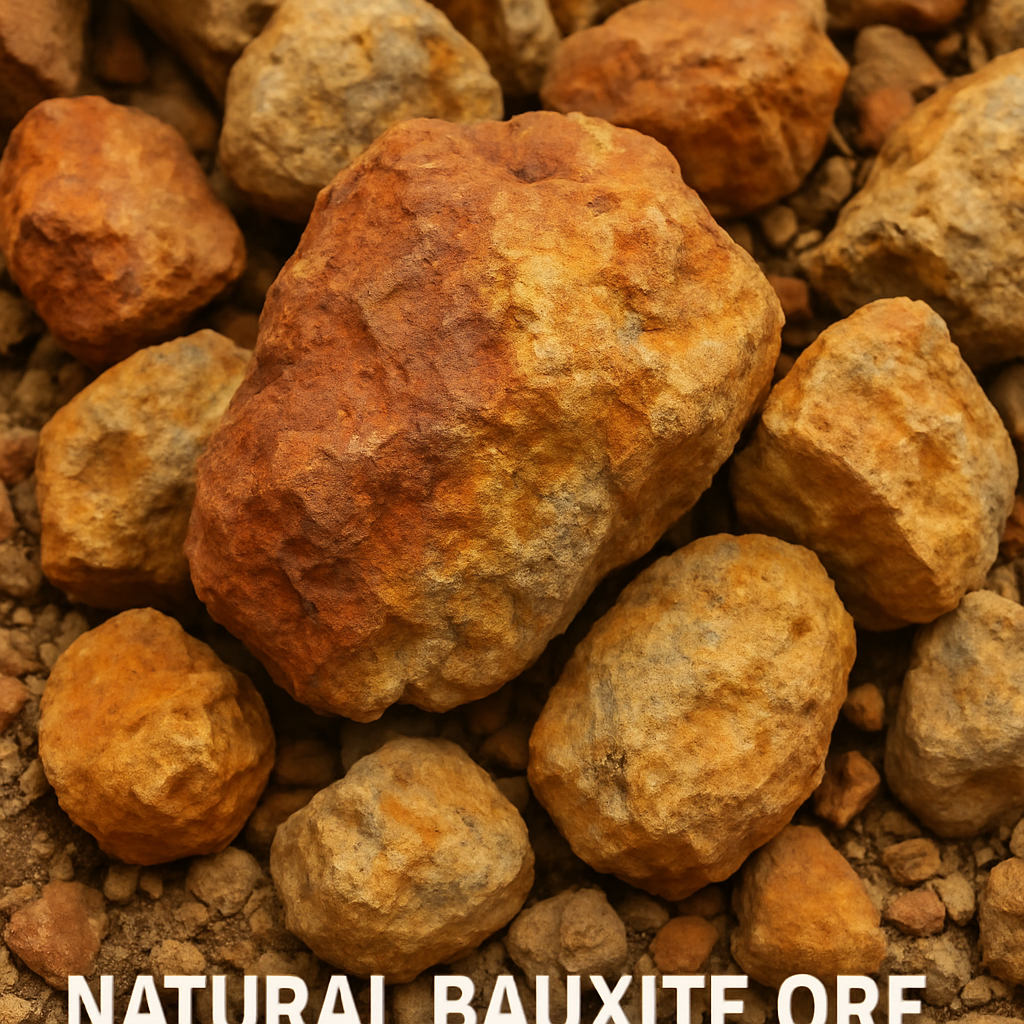
These characteristics make alumina invaluable in industrial settings. Its resistance to wear and corrosion enhances durability. Alumina’s unique properties make it a material of choice in many sectors.
Alumina Properties: Why It’s So Useful
Alumina’s properties make it exceptionally versatile. This compound features excellent mechanical strength. It withstands high pressures and stresses with ease.
One standout feature is its thermal stability. Alumina remains stable at temperatures over 2000°C. Such high resistance to heat is crucial in demanding environments.
Beneficial Properties of Alumina
- High Melting Point: Above 2000°C
- Electrical Insulation: Prevents electrical discharge
- Chemical Resistance: Inert in many conditions
- High Hardness: Valuable in abrasives and cutting tools
Alumina also acts as a superb electrical insulator. It prevents electric currents from passing through easily. This quality is vital in the electronics industry.
The material is resistant to various chemicals. It remains inert in acids and alkalis under normal conditions. This resistance enhances its longevity in harsh environments.
Its hardness is comparable to diamond. This attribute is crucial for manufacturing abrasives. Alumina’s hardness extends its usefulness to cutting and drilling tools.

by National Cancer Institute (https://unsplash.com/@nci)
Moreover, it has low thermal conductivity compared to metals. This property is beneficial in environments requiring thermal insulation. It aids in reducing heat transfer, preserving energy efficiency.
Together, these properties make alumina invaluable. They ensure its role across diverse applications and industries. Its multifaceted nature secures its position as a material of choice.
Alumina Manufacturing: From Bauxite to Finished Product
Alumina manufacturing begins with bauxite, an abundant ore rich in aluminum oxide. This is the primary raw material from which alumina is extracted. The process of refining bauxite into alumina involves several meticulous steps.
The Bayer Process is the dominant method for alumina production. It begins with crushing bauxite to a fine powder. This powder is then mixed with caustic soda and heated under pressure. This step dissolves the alumina while leaving impurities behind.
Steps in Alumina Manufacturing
- Crushing and Grinding: Prepare bauxite ore for extraction.
- Bayer Process: Dissolve alumina using caustic soda.
- Precipitation: Alumina hydrates form from the solution.
- Calcination: Heat transforms the hydrate into alumina.
Once dissolved, the alumina forms a sodium aluminate solution. To separate it, the solution is cooled, allowing alumina hydrate to precipitate. The solids are separated through filtration.
The precipitation stage is followed by calcination. In this phase, the alumina hydrate is heated above 1000°C. This crucial step removes the water molecules, yielding anhydrous alumina powder.
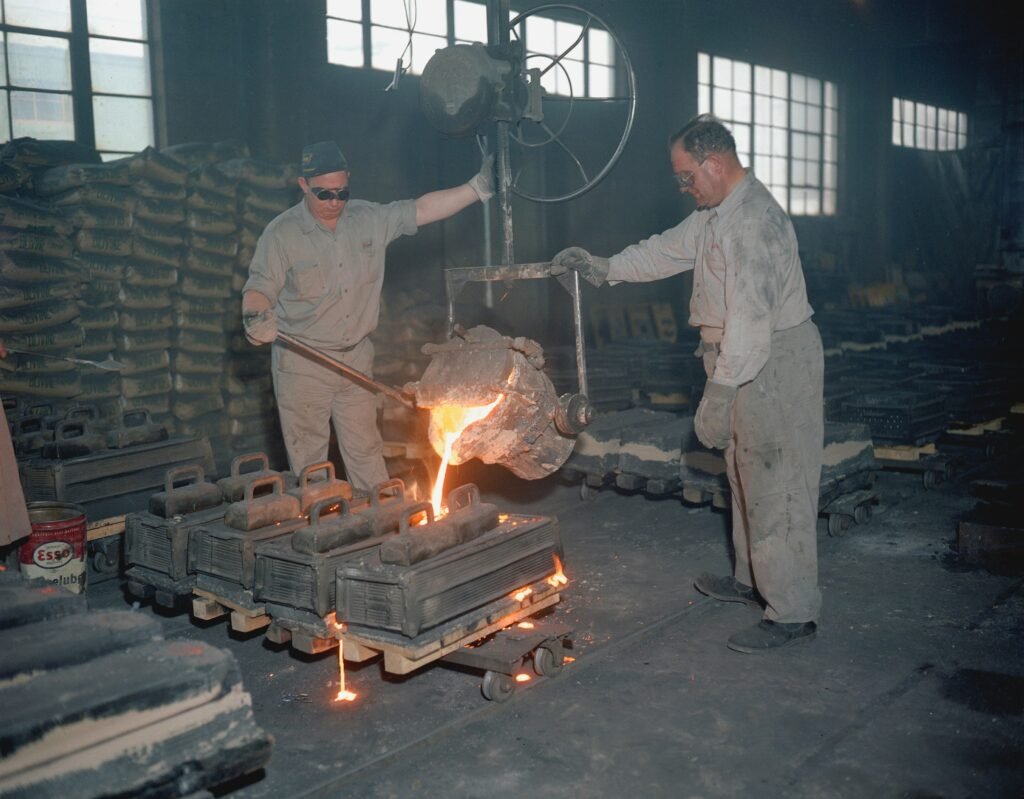
by Provincial Archives of Alberta (https://unsplash.com/@archivesalberta)
Different grades of alumina are then produced. These grades are tailored for specific applications based on purity and particle size. This versatility makes it applicable across multiple industries.
The entire process is energy-intensive but efficient. Technological advancements aim to reduce costs and environmental impact. New methods continue to enhance yield and minimize waste.
The global demand for alumina drives ongoing innovation. Companies invest in refining processes to boost efficiency. Such efforts ensure a steady supply for various high-tech and industrial applications.
Industrial Alumina: Core Applications in Modern Industry
Industrial alumina plays an integral role in today’s industries. Its widespread use is attributed to its remarkable properties. Alumina’s high melting point and strength are key advantages.
Alumina is extensively used in creating refractories. Refractories line furnaces in steel and glass production. They withstand high temperatures and resist chemical attack, essential for effective furnace operation.

by Achudh Krishna (https://unsplash.com/@biworks)
Another critical application is in the manufacturing of ceramics. Alumina’s hardness ensures that ceramic products are durable. These ceramics are used in everything from tiles to advanced electronics.
In the field of electronics, alumina acts as a substrate for circuits. Its excellent thermal conductivity aids in heat dissipation. Meanwhile, its electrical insulation keeps circuits safe from short-circuits.
Notable Applications of Industrial Alumina
- Refractory Materials: High heat resistance.
- Ceramic Products: Durability and toughness.
- Electronic Substrates: Efficient heat management.
- Automotive Parts: High-performance materials.
- Abrasives: Used in grinding and polishing tools.
The automotive industry benefits from alumina too. Its applications include engine components and sensor systems. Alumina enhances performance by reducing weight and improving strength.
Moreover, alumina’s abrasive qualities are invaluable. It’s an essential component in sandpapers and grinding tools. These abrasives are critical in manufacturing and finishing metal parts.
The versatility of industrial alumina continues to drive its demand. As new technologies emerge, alumina’s applications expand further. It is indeed a backbone of modern industry and innovation.
Alumina in Ceramics and Refractories
Alumina is indispensable in the ceramics industry. Its high melting point makes it perfect for high-temperature applications. This critical feature is why alumina is used in making refractories.
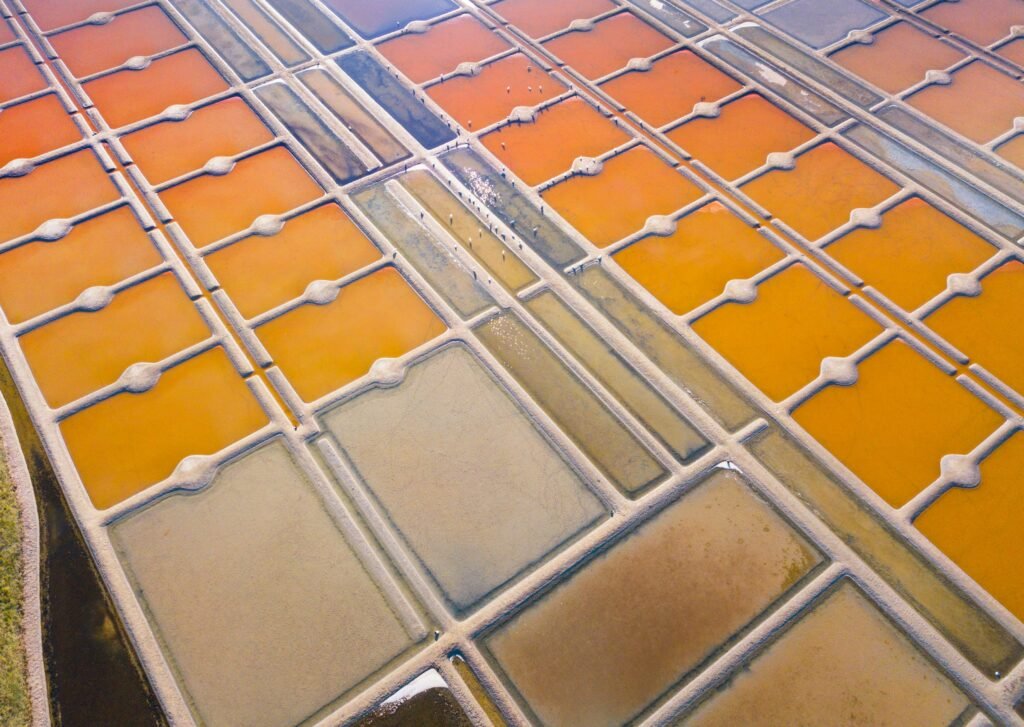
by Olivier Mesnage (https://unsplash.com/@omesnage)
Ceramics crafted with alumina are extremely durable. These products range from everyday tableware to sophisticated laboratory equipment. Alumina ceramics resist wear and offer exceptional longevity.
Refractory alumina products are essential for furnace linings. Steel and glass manufacturers rely on them for efficiency. These materials endure extreme conditions where regular materials fail.
Key Roles of Alumina in Ceramics and Refractories
- Durability: Prolongs the lifespan of ceramic products.
- High Melting Point: Ideal for high-temperature applications.
- Wear Resistance: Offers superior durability.
- Chemical Stability: Ensures durability in harsh conditions.
- Thermal Conductivity: Maintains integrity under heat.
Manufacturers use alumina because of its chemical stability. This property keeps alumina-based ceramics intact in corrosive environments. Stability is crucial for products exposed to chemicals.
Alumina refractories also find their place in cement and petrochemical industries. They are a cornerstone in industries that push materials to their limits. These sectors benefit immensely from alumina’s high strength and stability.
Innovative applications in ceramics continue to expand. Researchers are exploring new forms of alumina for specialized tasks. As a result, alumina’s significance in ceramics and refractories continues to grow.
Alumina in Electronics and Electrical Engineering
Alumina plays a pivotal role in electronics due to its unique properties. Its excellent thermal conductivity helps dissipate heat efficiently. This makes it ideal for use in substrates for microelectronic circuits.

by Logan Voss (https://unsplash.com/@loganvoss)
In electrical engineering, alumina serves as an insulating material. It efficiently isolates electrical components within devices. This property is vital for ensuring safety and performance in electronic products.
The high dielectric strength of alumina is another advantage. It allows for the miniaturization of components without compromising on functionality. Consequently, devices can be more compact and efficient.
Critical Functions of Alumina in Electronics
- Thermal Management: Helps manage heat in electronic devices.
- Insulation: Provides essential electrical insulation.
- Durability: Enhances the longevity of electronic components.
- Compactness: Supports device miniaturization.
- Cost Efficiency: Reduces material costs while maintaining quality.
Moreover, alumina’s durability ensures longevity for electronic products. Devices made with alumina components often require less maintenance. This durability translates to cost savings for both manufacturers and consumers.
Recent advancements in electronics see alumina being used in innovative ways. From LED lighting to advanced computing systems, alumina’s role is continuously expanding. Its invaluable contribution to efficiency and reliability makes alumina indispensable in the modern electronic and electrical landscape.
Alumina in Water Treatment and Environmental Management
Alumina is instrumental in water treatment processes. It acts as a powerful agent in purifying drinking water. Its use ensures safe and clean water is available to many.

by Bluewater Sweden (https://unsplash.com/@bluewaterglobe)
One of the most common forms is activated alumina. This is extensively used to remove contaminants like fluoride and arsenic. Its effectiveness in filtration systems is well-documented and widely trusted.
In environmental management, alumina helps manage and reduce pollution. It aids in controlling emissions by acting as a catalyst in industrial processes. This reduces harmful substances released into the air, promoting cleaner environments.
Alumina’s role in wastewater treatment is also crucial. It helps in precipitating impurities, making waste disposal safer and more efficient. As industries grow, the demand for effective water management solutions increases, making alumina indispensable.
Key Applications of Alumina in Water and Environment
- Filtration: Activated alumina removes harmful contaminants from water.
- Catalyst: Assists in reducing industrial emissions.
- Precipitation: Helps in efficient wastewater treatment.
- Sustainability: Promotes eco-friendly practices in industries.
- Conservation: Ensures clean water supply through effective management.
Alumina continues to meet the growing demands for environmental conservation. Its contributions to sustainability and safety make it an essential material in modern water treatment and environmental protection strategies. The evolving requirements of environmental management highlight the sustained relevance of alumina.
Specialized Forms: Activated, Calcined, and Hydrated Alumina
Alumina exists in several specialized forms, each with unique properties and applications.

by Tasha Kostyuk (https://unsplash.com/@tashakostyuk)
Activated alumina is highly porous, making it ideal for filtration. It’s used to dehumidify gases and liquids effectively.
In contrast, calcined alumina is valued for its hardness. It provides heat resistance and is crucial in the creation of abrasives.
Hydrated alumina, or alumina hydrate, is another important form. Used primarily as a flame retardant, it also serves in water purification.
Characteristics of Each Alumina Form
- Activated Alumina:
- Highly porous
- Excellent filtration properties
- Dehumidifying agent
- Calcined Alumina:
- Extremely hard
- Heat resistant
- Used in abrasives
- Hydrated Alumina:
- Flame retardant
- Water purification use
- Non-toxic
Each form serves distinct purposes across industries. Their versatility is a testament to alumina’s wide-ranging usefulness.
Innovations continue to improve these specialized forms. This enhances their applicability and expands their usage.
What Is Activated Alumina Used For?
Activated alumina is an invaluable tool in water filtration. It effectively removes contaminants such as fluoride and arsenic. This ensures safer and cleaner water.

by Meral Avdanlı (https://unsplash.com/@meralavd)
Industries also use it to dehumidify gases. It absorbs moisture, protecting products and prolonging equipment life.
Key Applications of Activated Alumina
- Water purification: Removes harmful contaminants.
- Dehumidification: Absorbs moisture effectively.
- Air purification: Used in air dryers and filtration systems.
- Catalysis: Supports chemical reactions in industrial processes.
Its versatility makes it crucial for both domestic and industrial uses.
What Is Calcined Alumina Used For?
Calcined alumina is renowned for its heat resistance. This makes it essential in refractory and ceramics production. Its hardness also makes it perfect for abrasives.

by A. C. (https://unsplash.com/@3tnik)
Industries rely on calcined alumina for its durability. It enhances the toughness of materials, ensuring long-term reliability.
Key Applications of Calcined Alumina
- Refractories: Produces heat-resistant materials.
- Abrasives: Used in grinding and polishing tools.
- Ceramics: Enhances strength and toughness.
- Glass: Plays a role in high-quality glass production.
These applications demonstrate its necessity in heavy-duty industrial environments.
What Is Alumina Hydrate Used For?
Alumina hydrate finds its primary role as a flame retardant. It’s widely used in plastics and polymers, ensuring safety.

by iggii (https://unsplash.com/@iggii)
The non-toxic nature of alumina hydrate makes it ideal for water treatment processes. It helps in the precipitation of impurities, purifying water efficiently.
Key Applications of Alumina Hydrate
- Flame retardancy: Ensures safety in polymers and plastics.
- Water purification: Removes impurities efficiently.
- Filler material: Used in paints and coatings.
- Environmental applications: Promotes safety and sustainability.
These diverse uses highlight alumina hydrate’s importance in enhancing safety and efficiency across multiple sectors.
Alumina in Homeopathy: Uses and Controversies
Homeopathy, an alternative medicine practice, uses alumina in treating various ailments. This use has sparked both interest and debate among practitioners and skeptics.

by Maria Kovalets (https://unsplash.com/@marylooo)
Alumina, or aluminum oxide, is believed to help with digestive issues and skin disorders. Homeopaths claim it balances the body’s systems, promoting overall well-being.
However, scientific communities often question these claims. Critics argue that homeopathic alumina lacks empirical support. This ongoing debate fuels both curiosity and skepticism.
Supporters of homeopathic treatments emphasize their non-toxic nature. They argue that dilutions used in homeopathy minimize any potential side effects.
Noted Uses of Alumina in Homeopathy
- Digestive issues: Considered for treating constipation.
- Skin disorders: Used for various skin conditions.
- Anxiety and mood: Believed to stabilize emotional health.
The conversation surrounding alumina in homeopathy continues to evolve. More research could provide clarity on its efficacy and safety.
What Is Alumina Used for in Homeopathy?
In homeopathy, alumina is primarily employed for its potential digestive benefits. Practitioners use it to address issues such as chronic constipation. Some believe it helps regulate bowel movements naturally.
Furthermore, alumina is often selected for its supposed skin health benefits. Homeopaths suggest it can treat dry skin conditions effectively. They claim that these uses tap into the body’s natural healing processes.
Homeopathic Applications of Alumina
- Constipation relief: Helps in natural regulation of digestion.
- Skin health: Address dry and uncomfortable skin conditions.
What Is Homeopathic Alumina Used For?
Homeopathic alumina is also used for mental health purposes. Practitioners believe it aids in reducing anxiety and stabilizing mood swings. They suggest it offers a gentle approach to mental wellness.
Another purported benefit is its effect on nervous system disorders. Homeopaths propose that alumina helps restore equilibrium in cases of neurological discomfort.
Common Therapeutic Claims
- Mental health: Used for anxiety and mood stabilization.
- Neurological balance: Suggested for nervous system discomfort.
These applications form the basis of the homeopathic approach to alumina. However, the efficacy and mechanisms remain subjects of ongoing debate and research within the community.
Alumina Products: Everyday and High-Tech Applications
Alumina’s versatility makes it integral to many products we use daily. Its unique properties enable broad usage across various sectors.

by piotr sawejko (https://unsplash.com/@piotrsaw)
One common application is in kitchenware. Alumina’s hardness and heat resistance make it ideal for cookware and utensils. These qualities ensure durability and thermal efficiency.
In the automotive industry, alumina enhances vehicle safety. It is used in brake pads and ceramic coatings. These applications improve braking performance and vehicle longevity.
Beyond everyday items, alumina is crucial in high-tech fields. Electronics benefit from alumina’s thermal conductivity. It serves as a substrate for circuit boards, keeping devices cool.
Alumina also supports medical advancements. It’s used in dental implants and bone screws. These applications leverage alumina’s bio-compatibility and strength.
Key Alumina Products
- Cookware and utensils: Hard and heat-resistant.
- Brake pads: Enhanced safety and durability.
- Electronic components: Efficient heat management.
- Dental implants: Bio-compatible and strong.
- Bone screws: Aid in medical procedures.
Such diverse uses highlight alumina’s significant impact. It supports both consumer conveniences and pioneering technologies. As innovation progresses, the range of alumina applications continues to expand, meeting new challenges and needs in various industries.
Alumina Benefits: Why Industries Rely on It
Alumina offers numerous benefits that are essential to various industries. Its durability and versatility make it a preferred material in many applications.

by Cemrecan Yurtman (https://unsplash.com/@cmrcn_)
One of its key attributes is corrosion resistance. This property ensures longevity in harsh environments, making it perfect for industrial machinery and equipment.
Alumina’s thermal stability is also noteworthy. With high melting points, it withstands extreme temperatures. This is crucial in high-temperature applications like furnaces and kilns.
Moreover, alumina is cost-effective. Its availability and processing ease lower production costs, benefiting industries that require large quantities.
Key Benefits of Alumina
- Corrosion resistance: Ensures durability in harsh conditions.
- Thermal stability: Suitable for high-temperature uses.
- Cost-effectiveness: Reduces manufacturing expenses.
- Versatility: Suitable for multiple applications.
These benefits highlight why alumina remains an industry favorite. Its unique properties cater to both practical and economic needs, ensuring its continued relevance. As industries advance, the reliance on alumina’s impressive capabilities persists, securing its role in future developments.
Alumina Applications: A Sector-by-Sector Overview
Alumina’s widespread applications span various sectors, each benefiting from its unique properties. From construction to healthcare, it plays a critical role.
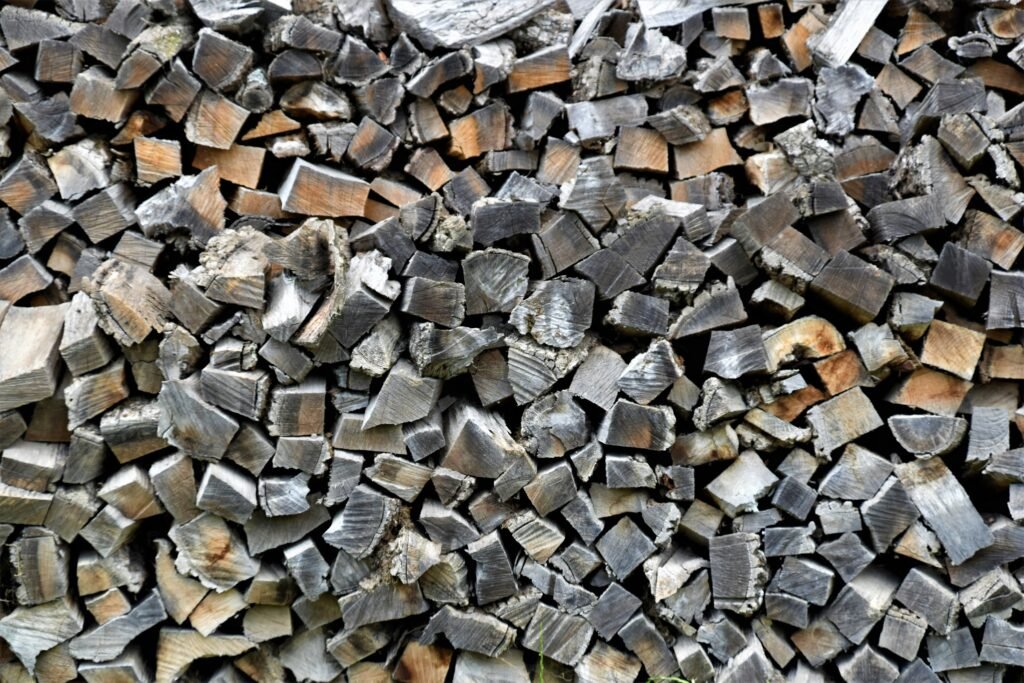
by Waldemar Brandt (https://unsplash.com/@waldemarbrandt67w)
In construction, alumina enhances the durability of cement and concrete. Its strength and resistance help buildings withstand harsh conditions.
The electronics sector uses alumina for circuit boards. Its thermal conductivity and electrical insulation improve performance and reliability.
In healthcare, alumina is used for medical devices and implants. Its biocompatibility ensures safety and effectiveness in medical applications.
Key Sectors Utilizing Alumina
- Construction: Enhances concrete and cement durability.
- Electronics: Improves thermal management in circuits.
- Healthcare: Safe and effective in medical devices.
- Automotive: Contributes to lightweighting and efficiency.
- Environmental management: Assists in water treatment processes.
Alumina’s presence in diverse sectors underscores its versatility. Each industry leverages its strengths to address specific challenges, showcasing its enduring value. As technology evolves, new applications for alumina are continually emerging, reinforcing its integral role across different fields.
The HTS Code for Alumina Used in ATH: Trade and Regulation
The Harmonized Tariff Schedule (HTS) code is crucial for classifying alumina in international trade. It facilitates smooth customs processes and ensures consistent regulation.

by Brett Jordan (https://unsplash.com/@brett_jordan)
For alumina used in aluminum trihydrate (ATH), the HTS code aids in tariff determination. This classification impacts global pricing and supply chain logistics.
Key Points About HTS Code
- Essential for customs and trade compliance.
- Influences pricing and tariff regulations.
- Streamlines international shipping procedures.
Understanding the HTS code benefits manufacturers, distributors, and traders alike. By ensuring proper classification, businesses can avoid disruptions and capitalize on international opportunities efficiently. This clarity in trade regulation underscores alumina’s integrated role in global commerce.
The Future of Alumina: Innovation and Sustainability
As industries evolve, alumina’s role expands significantly. Research focuses on enhancing its properties for sustainability. Innovation leads to more eco-friendly applications across sectors.

by ThisisEngineering (https://unsplash.com/@thisisengineering)
Alumina contributes to energy-efficient solutions. Its use in recycling and sustainable manufacturing processes highlights its importance. Both environment and industry benefit from these advancements.
Future Innovations in Alumina
- Development of new composite materials.
- Improved recycling methods.
- Energy-saving industrial processes.
Continuous research into alumina’s capabilities promises exciting breakthroughs. These advancements will not only improve existing applications but also pioneer new ones. Emphasizing sustainability and innovation, alumina remains pivotal in shaping a greener future for various industries.
Conclusion: The Enduring Importance of Alumina
Alumina stands as a cornerstone in countless industries. Its versatility spans from manufacturing to homeopathy. This multifaceted material drives innovation and efficiency.
As applications continue to evolve, alumina adapts and transforms. It meets modern demands while contributing to sustainable solutions. Industries worldwide rely on its unique properties.
Understanding alumina’s capabilities ensures that it remains indispensable. Its future potential is immense, paving the way for new advancements. Indeed, alumina’s impact on industry and technology is profound and enduring.


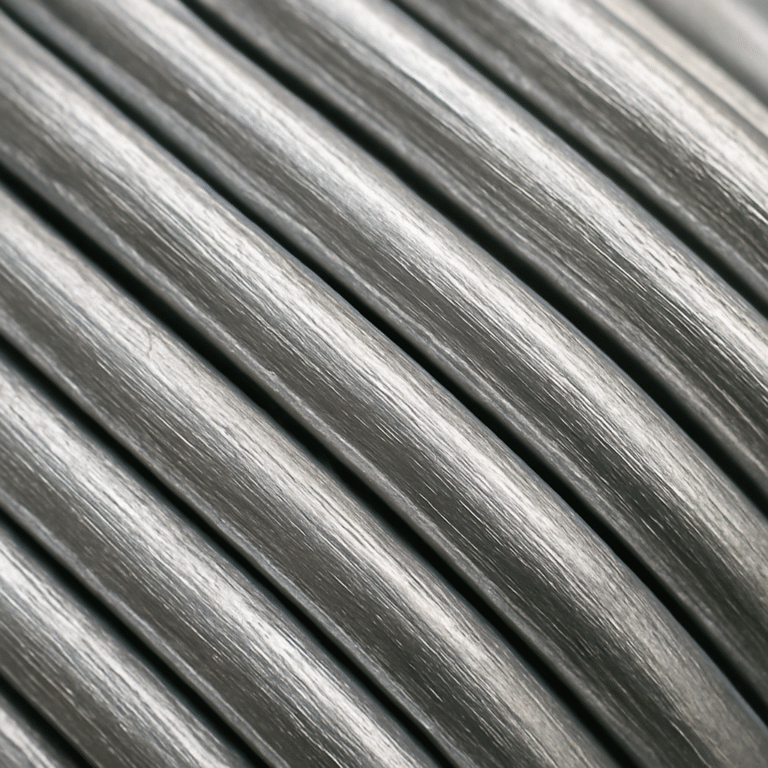
[…] Alumina ceramic, also known as aluminum oxide, is a crystalline compound. It forms the basis for a wide range of ceramics. This material stands out due to its exceptional hardness and thermal stability. […]